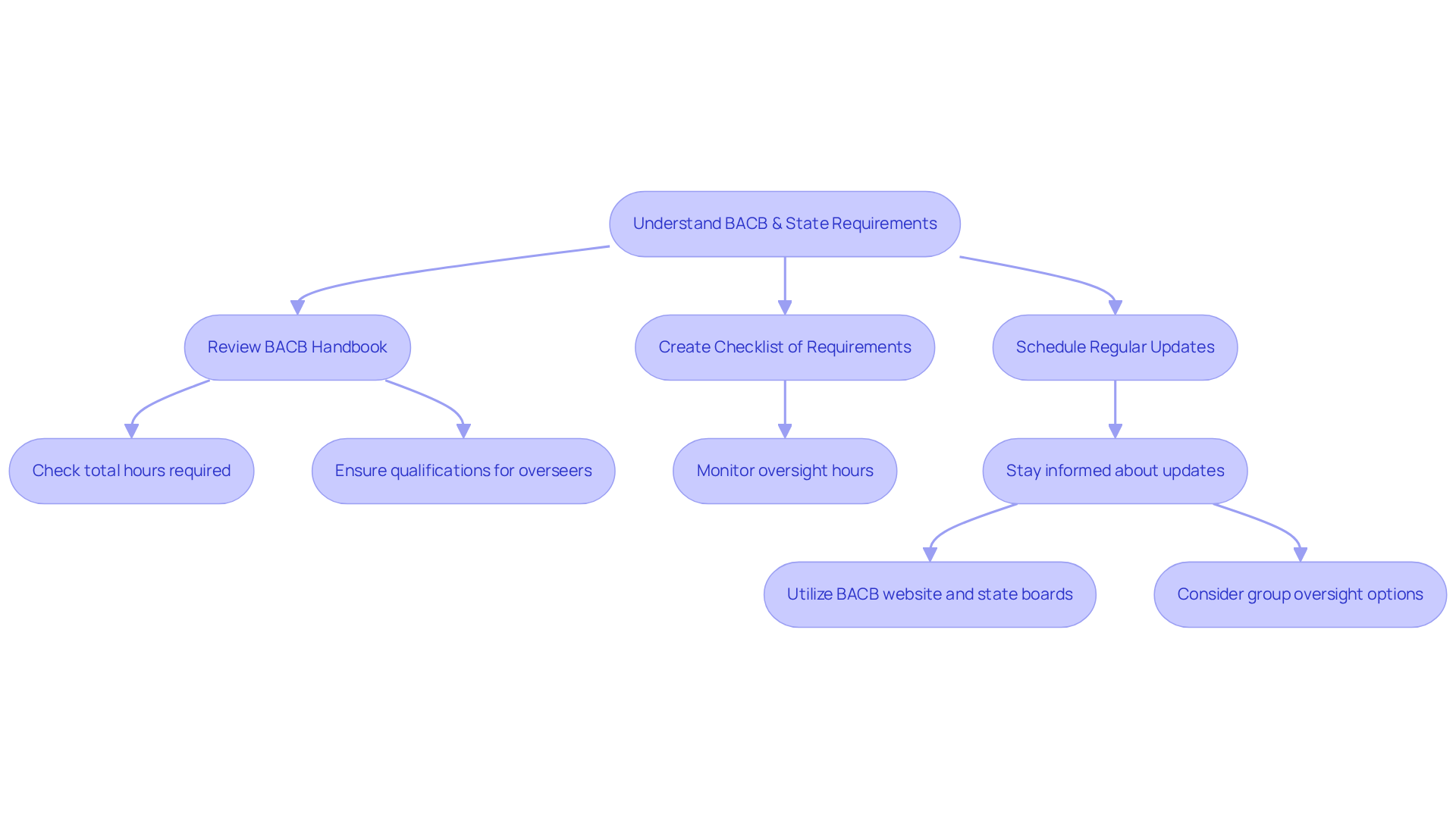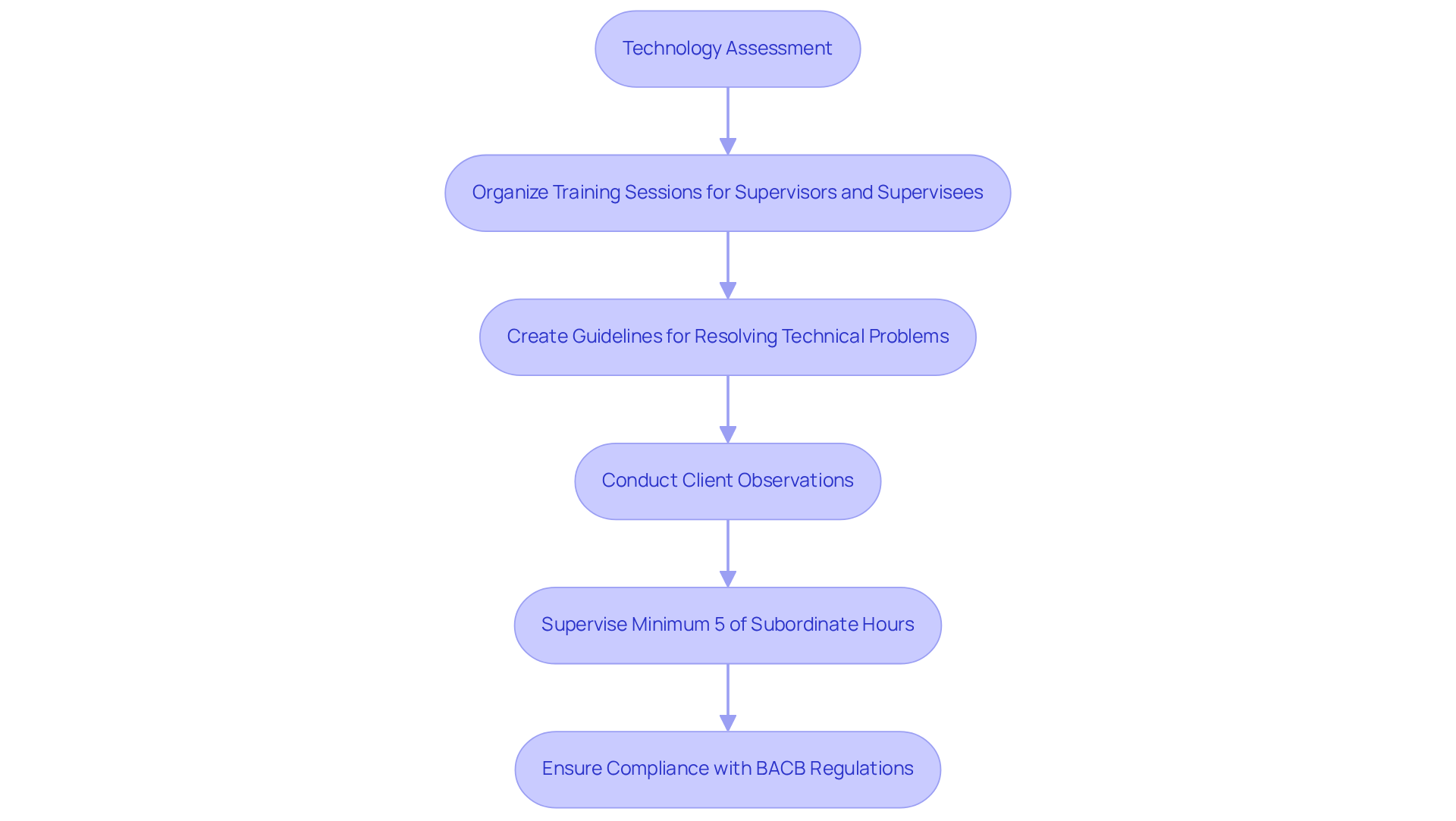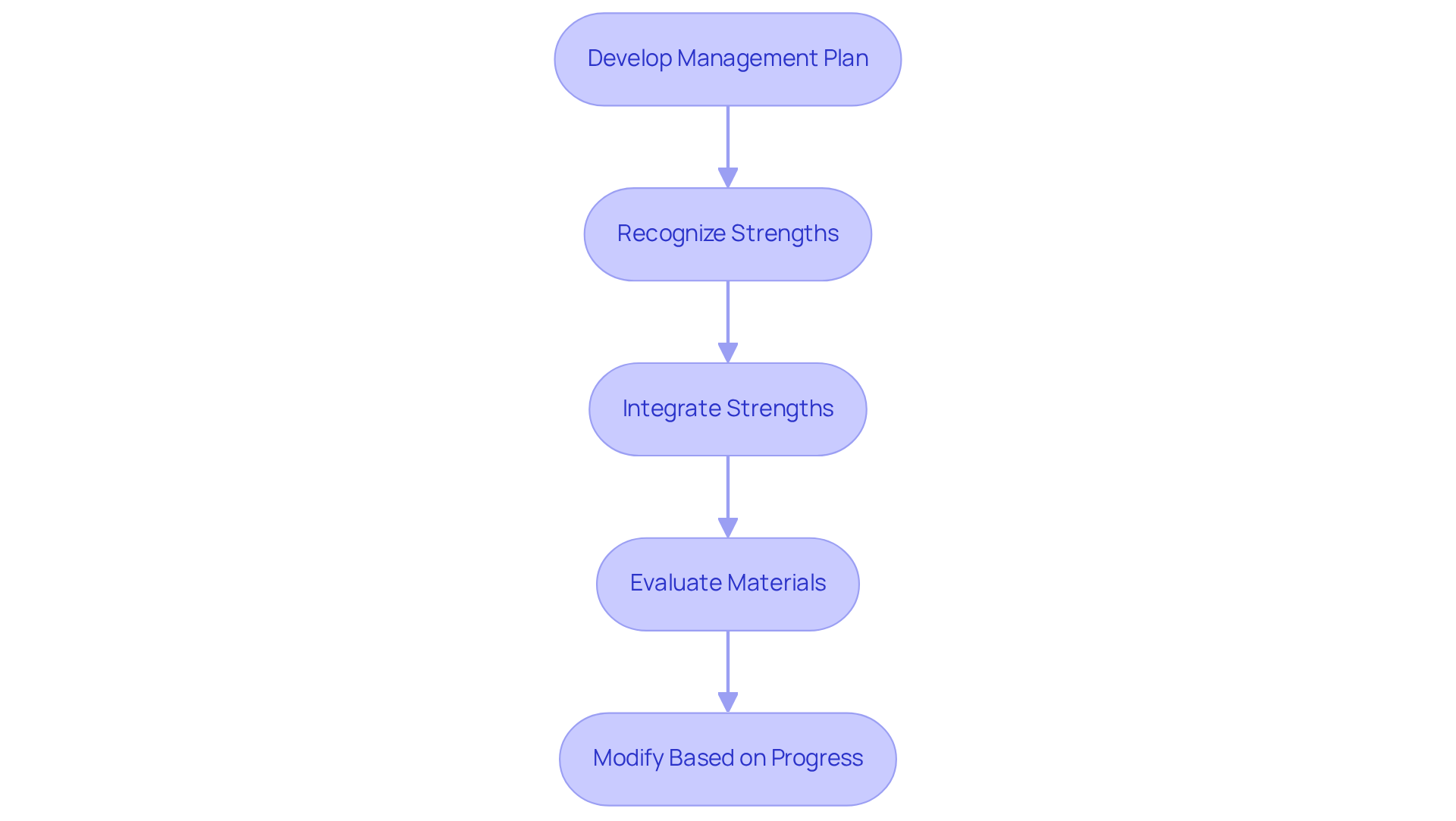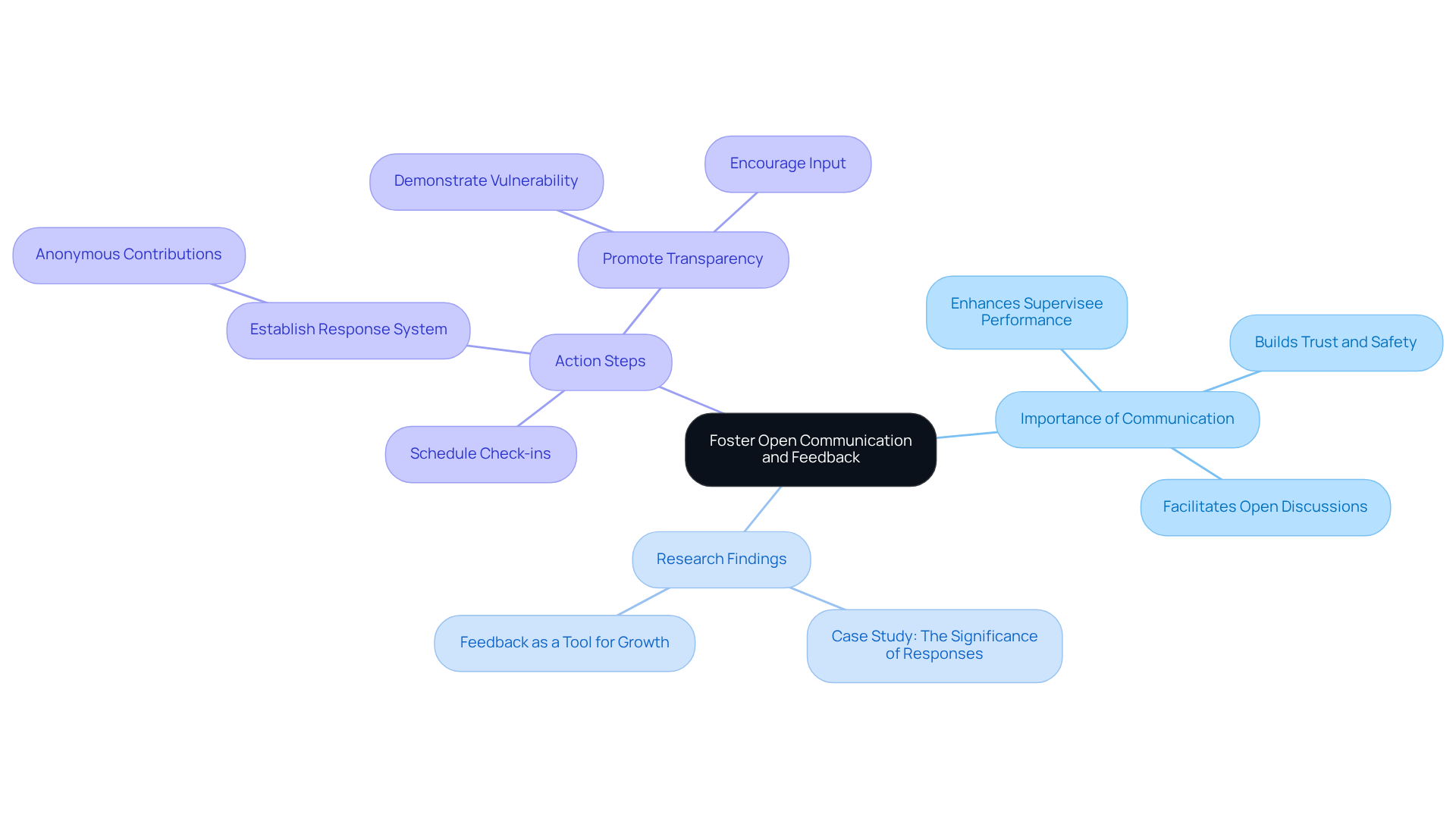September 19, 2025

Best practices for remote BCBA supervision success encompass a comprehensive understanding of regulatory requirements, technological competence, structured supervision materials, and fostering open communication.
Effective remote supervision for Board Certified Behavior Analysts (BCBAs) has become increasingly vital as the field evolves and adapts to new technologies and regulations. The demand for BCBAs is rising, making it essential for supervisors to understand the intricacies of BACB guidelines and state requirements. By doing so, they can ensure compliance while enhancing the quality of their oversight. This article delves into best practices that not only streamline remote supervision but also address the unique challenges it presents.
How can BCBAs leverage technology and foster open communication to create a supportive and effective remote supervision environment?
To effectively supervise as a remote BCBA, it is crucial to understand the guidelines set forth by the Behavior Analyst Certification Board (BACB) and pertinent state laws. The BACB outlines essential criteria for oversight, including total hours required, qualifications for overseers, and a minimum frequency of oversight—specifically, 2 hours each month, with at least half being personalized. Managers must be certified as a remote BCBA and comply with BACB standards for delivering oversight. Additionally, state regulations may introduce extra stipulations, such as specific licensure or training requirements. It's important to note that at least 50% of BCBA fieldwork hours must derive from unrestricted activities, which involve the independent application of behavior analytic skills. Consistently referring to the BACB Handbook alongside state-specific regulations is essential for ensuring compliance and safeguarding both the guide and the supervisee. Monitoring oversight hours is critical for adherence to BACB standards, and remote BCBA supervisors must ensure that precise records are maintained. To stay informed about , utilize resources such as the BACB website and state licensing boards. Furthermore, consider the possibility of lower rates for group oversight or trainees in underserved regions, which can provide economical alternatives for guidance.
Action Steps:

In the realm of remote BCBA oversight, having technological proficiency is paramount. Supervisors must master a variety of digital platforms that enhance communication and streamline workflows. Tools such as Zoom and Microsoft Teams, along with project management software like Trello and Asana, are essential for facilitating effective interactions. It is crucial to provide training for both managers and their subordinates on these tools to ensure smooth communication and precise documentation.
Moreover, managers are required to conduct at least one client observation each month and oversee a minimum of 5% of their subordinates’ hours, underscoring the necessity for effective oversight practices.
To optimize remote supervision, consider these action steps:
As David Isaac observes, 'Telehealth is no longer a temporary solution but a permanent method,' highlighting the significance of incorporating technology into oversight practices. By prioritizing these strategies and adhering to ethical guidelines when adopting new technologies, practices can foster a more efficient and effective remote oversight environment.

Effective remote BCBA supervision is paramount and necessitates meticulous preparation of materials that align with the goals of the supervision process. Supervisors must develop a that encompasses objectives, resources, and assessment tools tailored to the unique needs of each supervisee, particularly for those under a remote BCBA. By leveraging the distinct strengths of supervisees, their learning experience can be significantly enhanced. For instance, if a supervisee excels in data analysis, assigning tasks that utilize this skill while also addressing areas for improvement can be particularly beneficial.
Action Steps:

To foster a productive supervisory relationship, establishing is essential. Supervisors must motivate their team members to express thoughts, concerns, and suggestions consistently. This can be supported through scheduled check-ins, casual conversations, or evaluation forms. Furthermore, offering constructive critiques is vital for the development of those being supervised. Supervisors should strive to create a safe space where supervisees feel comfortable discussing both challenges and successes.
Research indicates that effective responses can significantly enhance supervisee performance, leading to improved outcomes in their professional practice. A case study titled 'The Significance of Responses in Workplace Communication' illustrates how consistent and constructive feedback cultivates a supportive atmosphere that boosts employee development and motivation.
Action Steps:
As Ed Batista aptly stated, "Make feedback normal. Not a performance review." By prioritizing these practices, supervisors can significantly enhance the performance and development of their supervisees, particularly those who are remote BCBA, ultimately leading to improved outcomes in their professional practice.

Effective remote supervision for BCBAs is fundamentally rooted in a thorough understanding of BACB guidelines and state regulations, coupled with the integration of technology and open communication. By adhering to established standards and embracing innovative tools, supervisors can cultivate a supportive and productive environment for their supervisees, ensuring compliance while fostering professional growth.
Key strategies include:
Each of these elements is crucial in facilitating effective remote oversight. The significance of structured planning and leveraging individual strengths further enriches the supervisory experience, ultimately leading to improved outcomes for both supervisors and supervisees.
As the landscape of BCBA supervision continues to evolve, embracing these best practices is essential for success. The focus must remain on fostering an environment that prioritizes clear communication, continuous learning, and adaptability to technological advancements. By doing so, supervisors not only enhance their own effectiveness but also empower their supervisees to thrive in their professional journeys.
What is the importance of understanding BACB and state requirements for remote supervision?
Understanding BACB and state requirements is crucial for remote BCBAs to ensure compliance with guidelines for oversight, including total hours required, qualifications for overseers, and the frequency of oversight.
What are the BACB's requirements for oversight hours?
The BACB requires a minimum of 2 hours of oversight each month, with at least half of those hours being personalized.
What qualifications must a remote BCBA supervisor have?
A remote BCBA supervisor must be certified as a remote BCBA and comply with BACB standards for delivering oversight.
Are there additional requirements imposed by state regulations?
Yes, state regulations may impose additional stipulations, such as specific licensure or training requirements beyond BACB guidelines.
What percentage of BCBA fieldwork hours must come from unrestricted activities?
At least 50% of BCBA fieldwork hours must come from unrestricted activities, which involve the independent application of behavior analytic skills.
How can remote BCBAs ensure compliance with BACB standards?
Remote BCBAs can ensure compliance by consistently referring to the BACB Handbook and state-specific regulations, monitoring oversight hours, and maintaining precise records.
What resources can be used to stay informed about updates in requirements?
To stay informed about updates in requirements, remote BCBAs should utilize resources such as the BACB website and state licensing boards.
Are there economical alternatives for oversight in underserved regions?
Yes, there may be lower rates for group oversight or trainees in underserved regions, providing economical alternatives for guidance.
What action steps should remote BCBAs take to ensure compliance?
Remote BCBAs should review the latest BACB Handbook and state regulations, create a checklist of requirements, and schedule regular updates to review any changes in regulations.
Our expert recruitment strategies and AI-driven sourcing ensure that you receive top-notch candidates quickly, without compromising on quality. Whether you’re looking for BCBAs, Clinical Directors, or RBTs, we’ve got you covered.